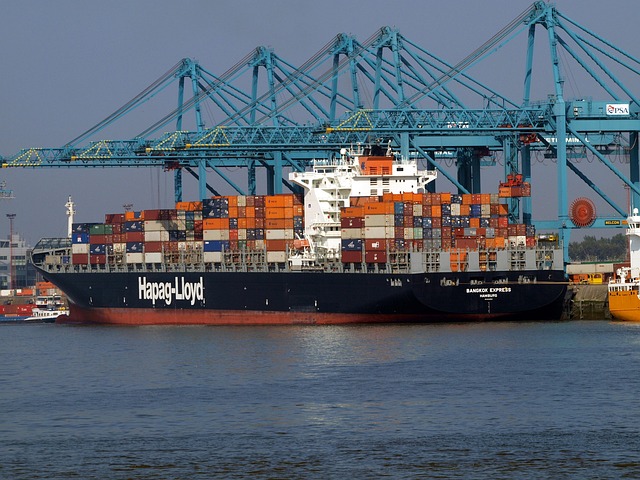Stackable shipping containers have transformed global trade by simplifying intermodal transfers, increasing cargo capacity, reducing handling times, and minimizing damage risk. These versatile containers, with their standardized dimensions, streamline logistics across road, rail, and sea transport. Future innovations include specialized and modular containers tailored to e-commerce's diverse needs, lighter and stronger materials for fuel efficiency, and smart technologies for real-time tracking, enhancing logistics management and security in container shipping.
Stackable shipping containers are transforming intermodal transfer processes, streamlining operations, and enhancing efficiency across logistics and supply chain management. This innovative technology addresses the complex nature of intermodal transportation by simplifying the stacking, loading, and unloading of containers. In this article, we explore the rise of stackable containers, delve into the intricacies of intermodal transfers, and discuss the significant benefits and future trends in containerization technology.
- The Rise of Stackable Shipping Containers
- Understanding Intermodal Transfer: A Complex Process
- How Stacking Containers Streamlines Operations
- Benefits for Logistics and Supply Chain Management
- Future Trends in Containerization Technology
The Rise of Stackable Shipping Containers
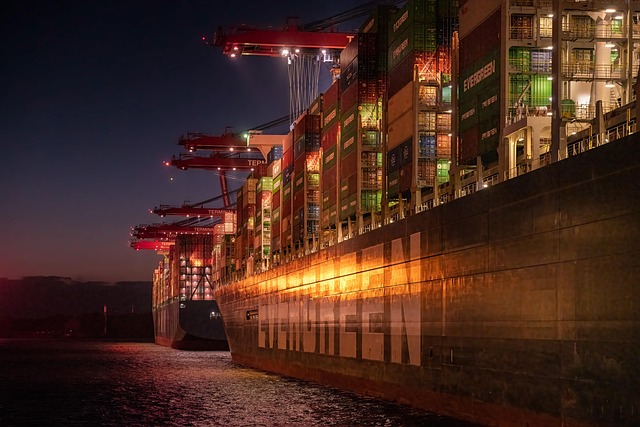
The rise of stackable shipping containers has significantly transformed the landscape of international trade and logistics. These innovative, modular solutions are revolutionizing container shipping by streamlining intermodal transfer processes, offering unparalleled efficiency in transporting goods worldwide. With their versatile nature, they can be seamlessly integrated into various transport modes, from sea to land and even rail, ensuring a smooth flow of cargo.
Stackable containers, also known as multi-level or double-stacked containers, allow for vertical storage, maximizing space utilization within container depots, ships, and rail cars. Their design includes features such as reinforced corners, edge protection, and secure locking systems, enhancing safety during transport. This advanced technology not only optimizes cargo capacity but also reduces handling times, minimizing the risk of damage to fragile or valuable shipments.
Understanding Intermodal Transfer: A Complex Process

Understanding Intermodal Transfer: A Complex Process
Intermodal transfer refers to the seamless movement of cargo between different modes of transport—road, rail, and sea—without any disruptions or delays. This process is crucial for global supply chains as it allows for efficient container shipping across vast distances. Each leg of the journey involves specific handling procedures, from loading and unloading at ports to road and rail transportation, ensuring that freight containers are safely transferred between modes while maintaining their integrity.
The complexity lies in coordinating these diverse systems to ensure timely delivery. Shipping containers play a pivotal role here, serving as versatile and standardized units that facilitate the transfer process. Container dimensions and capacities must be precisely considered to optimize space utilization during transport, ensuring efficient container leasing or rental services without unnecessary costs. Whether it’s a sea container, storage container, refrigerated container, flat rack container, open top container, high cube container, or any other type, these modular containers are designed to withstand the rigors of intermodal transportation.
How Stacking Containers Streamlines Operations
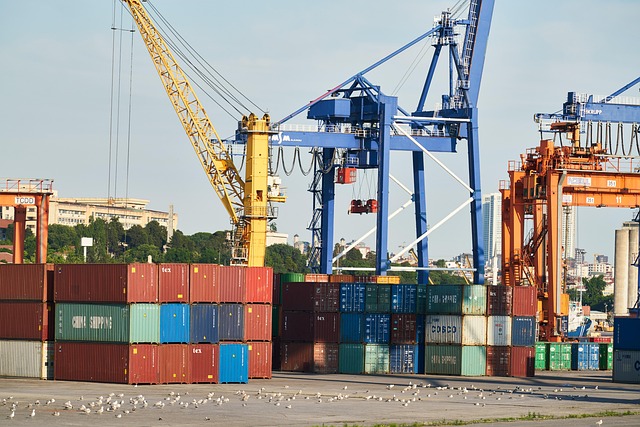
Stacking shipping containers significantly streamlines operations in intermodal transfer processes by maximizing space utilization and minimizing handling time. Traditional methods often require separate loading and unloading for each mode of transport—road, rail, or sea—leading to delays and increased costs. With stackable containers, however, cargo can be easily transferred between these modes without the need for re-stowing, as one container can sit on top of another, creating a vertical stack. This modular approach not only expedites the loading/unloading process but also reduces the risk of damage to goods during transit.
Moreover, stacking enhances flexibility and efficiency in container management. Different types of containers—freight, sea, refrigerated, high cube, among others—can be intermixed within the stack, allowing for customized solutions tailored to specific cargo needs. This versatility enables seamless container leasing or rental services, ensuring efficient use of resources at container depots worldwide. Container dimensions and capacities are standardized, making them easily interchangeable, further simplifying the entire supply chain process.
Benefits for Logistics and Supply Chain Management
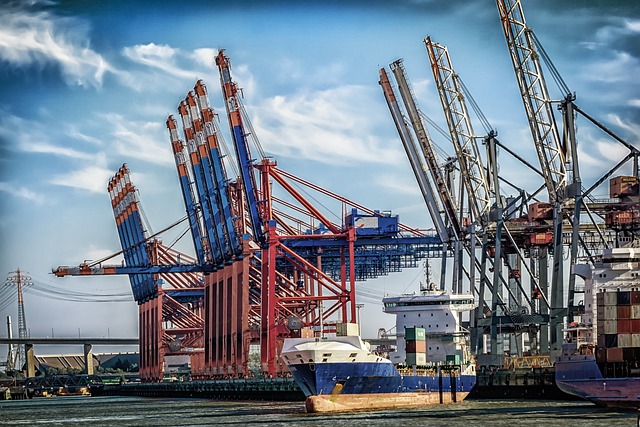
Stackable shipping containers offer significant advantages for logistics and supply chain management. By streamlining intermodal transfer processes, these versatile freight containers ensure faster movement of goods between different transport modes—from sea to rail to road—with minimal handling, reducing time and costs associated with traditional container transport. The use of stackable containers also optimizes space utilization in ship holds, train carriages, and warehouses, maximizing cargo capacity and minimizing empty backhaul trips, which is a major concern in the industry.
Moreover, these modular containers come in various types tailored to different shipping needs—such as refrigerated, open top, flat rack, high cube, and more—enabling efficient transport of diverse cargoes under one roof. Container leasing and rental services further enhance flexibility, allowing businesses to scale their operations according to demand. With standard dimensions and compatibility across modes, stackable shipping containers facilitate seamless global trade by simplifying container tracking, reducing damage risks, and enhancing overall supply chain efficiency and reliability.
Future Trends in Containerization Technology
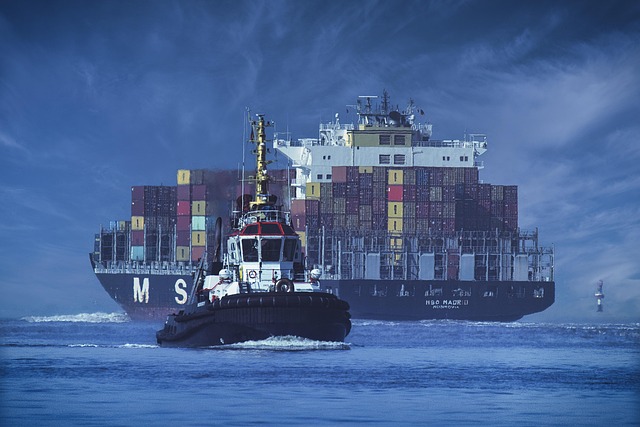
The future of shipping containers promises exciting innovations that will further revolutionize intermodal transfer processes. One notable trend is the development of more specialized and modular containers. As e-commerce continues to grow, unique cargo shapes and sizes require customized solutions. Therefore, we’ll see a rise in modular, multi-purpose containers capable of accommodating diverse goods. For instance, a single container could transform into a temporary office space or a refrigerated unit, ensuring efficient utilization and reduced waste.
Additionally, advancements in materials science are leading to lighter, stronger, and more environmentally friendly shipping crates. The use of composite materials and advanced alloys will reduce weight without compromising durability, thereby decreasing fuel consumption during transport. Furthermore, the integration of smart technologies is on the horizon, enabling real-time tracking and monitoring of cargo containers throughout their journey across various modes of transport—from sea to storage depot. This enhances visibility, improves logistics management, and ensures secure container shipping.
Stackable shipping containers are revolutionizing intermodal transfer processes, offering significant benefits to logistics and supply chain management. By streamlining operations and enhancing efficiency, these innovative solutions are set to shape the future of containerization technology. As the demand for seamless global trade continues to grow, it’s clear that stackable containers will play a pivotal role in navigating the complex world of intermodal transportation.
